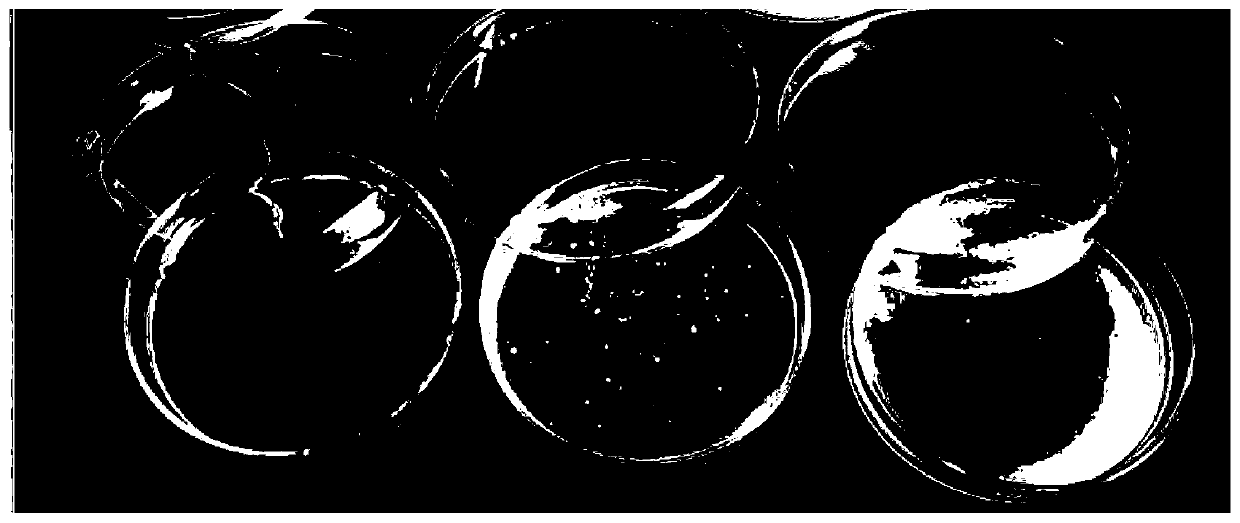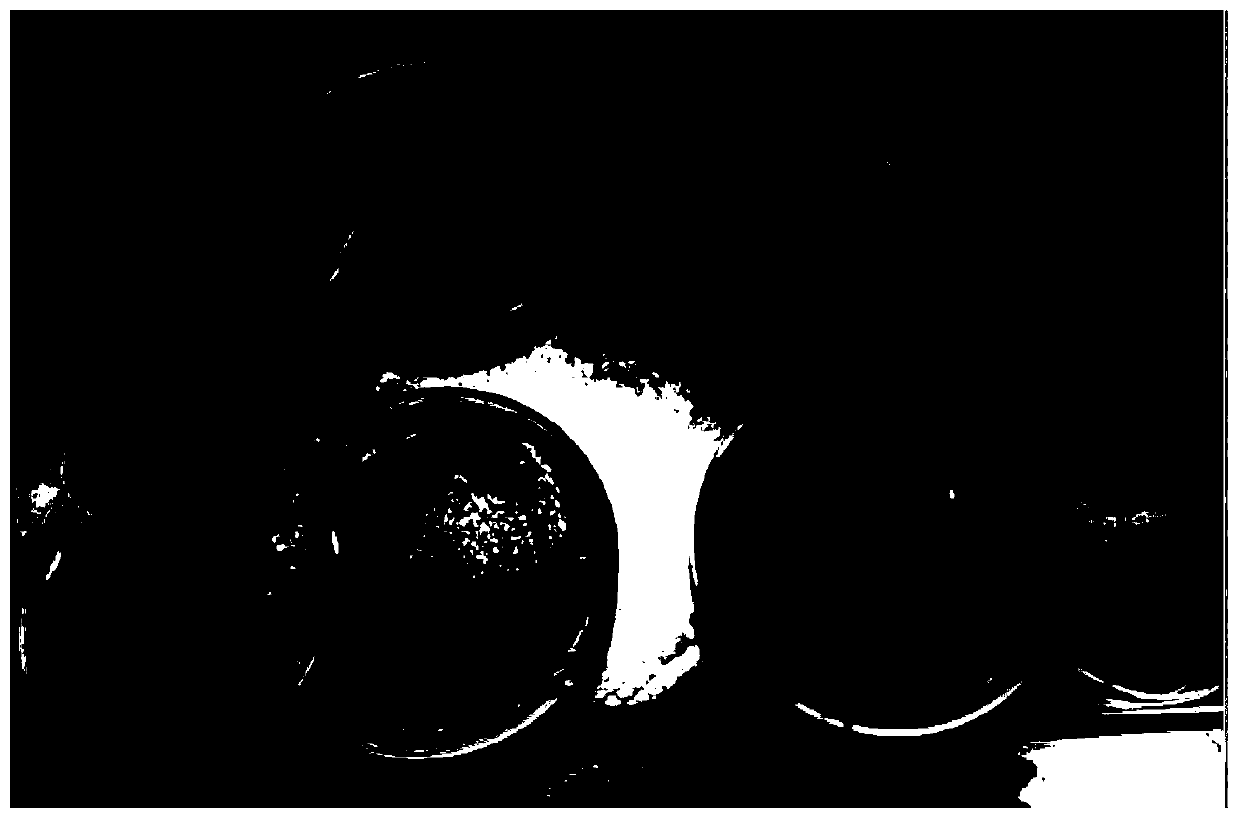Identification and evaluation method of sterilization effect of disinfectant
A technology of sterilization effect and evaluation method, which is applied in the direction of biochemical equipment and methods, microorganism measurement/inspection, etc., can solve the problems of short detection cycle and long time, and achieve the effect of saving time and wide detection concentration range
- Summary
- Abstract
- Description
- Claims
- Application Information
AI Technical Summary
Problems solved by technology
Method used
Image
Examples
Embodiment 1
[0032] (1) Arrange 8 sterilized test tubes on the test tube rack, and mark the test tube number; (2) Add 0.9% normal saline after sterilization to each test tube, and add 9 mL to test tubes 1-5, 6-8 Add 10mL to No. test tube, put 8 test tubes into a water bath at 20±2°C; (3) Add 1mL bacterial solution to No. 1 test tube and mix well, transfer 1mL into No. Take three 1mL samples and transfer them into test tube No. 3, test tube 4, and test tube No. 5 respectively. After mixing the solutions in test tubes 3-5, pour the solutions in test tubes 6-8 into tubes 3-5 in turn, and mix well. Then pipette 10mL of the solution from tubes 3-5 into test tubes 6-8. (4) Take 30 μl of normal saline from No. 3 test tube, then take 30 μl of 1000 ppm PHMG disinfectant (that is, the disinfectant concentration is 3 ppm) and mix it in No. 3 test tube, take out 50 μl of normal saline from No. 4 test tube, and then remove the disinfectant Mix 50 μl in test tube No. 4, take 100 μl of normal saline fro...
Embodiment 2
[0035](1) Arrange 6 sterilized test tubes on the test tube rack, and mark the test tube number; (2) Add 0.9% normal saline after sterilization to each test tube, among which 9 mL is added to test tubes 1-4, 5-6 Add 10mL to the No. test tube, put the 6 test tubes in a water bath at 20±2℃; (3) Add 1mL of bacterial solution to the first test tube and mix well, transfer 1mL into the second test tube, mix again, Take three 1mL tubes and transfer them into the 3rd test tube and the 4th test tube respectively. After mixing the 3-4 test tubes respectively, pour the solutions of the 6-8 test tubes into the 3-5 tubes in turn, mix well, and then respectively from the 3 - Tube No. 5 Pipette 10 mL of the solution into No. 6-8 test tubes. (4) Take out 30 μl of normal saline from No. 3 test tube, then take 30 μl of nano-silver ion antibacterial agent of 10000ppm (that is, the concentration of antibacterial agent is 30ppm) and mix in No. 3 test tube, take out 60 μl of normal saline from No. 4...
Embodiment 3
[0038] (1) Arrange 8 sterilized test tubes on the test tube rack, and mark the test tube number; (2) Add 0.9% normal saline after sterilization to each test tube, and add 9 mL to test tubes 1-5, 6-8 Add 10mL to the No. test tube, and put 8 test tubes into a water bath at 20±2°C; (3) Add 1mL of the bacterial solution to the first test tube and mix well, then transfer 1mL into the second test tube, mix well again, and transfer from the second test tube Take three 1mL tubes and transfer them into the 3rd test tube, 4th test tube, and 5th test tube respectively. After mixing the test tubes 3-5, pour the solution from the 6-8 test tubes into the 3-5 tubes in turn, and mix well. , and then pipette 10mL of the solution from tubes 3-5 into test tubes 6-8. (4) Take out 50 μl of normal saline from No. 3 test tube, then take 50 μl of chitosan disinfectant of 10000 ppm (that is, the concentration of disinfectant is 50 ppm) and mix it in No. 3 test tube, take out 100 μl of normal saline fr...
PUM
 Login to View More
Login to View More Abstract
Description
Claims
Application Information
 Login to View More
Login to View More - R&D
- Intellectual Property
- Life Sciences
- Materials
- Tech Scout
- Unparalleled Data Quality
- Higher Quality Content
- 60% Fewer Hallucinations
Browse by: Latest US Patents, China's latest patents, Technical Efficacy Thesaurus, Application Domain, Technology Topic, Popular Technical Reports.
© 2025 PatSnap. All rights reserved.Legal|Privacy policy|Modern Slavery Act Transparency Statement|Sitemap|About US| Contact US: help@patsnap.com



